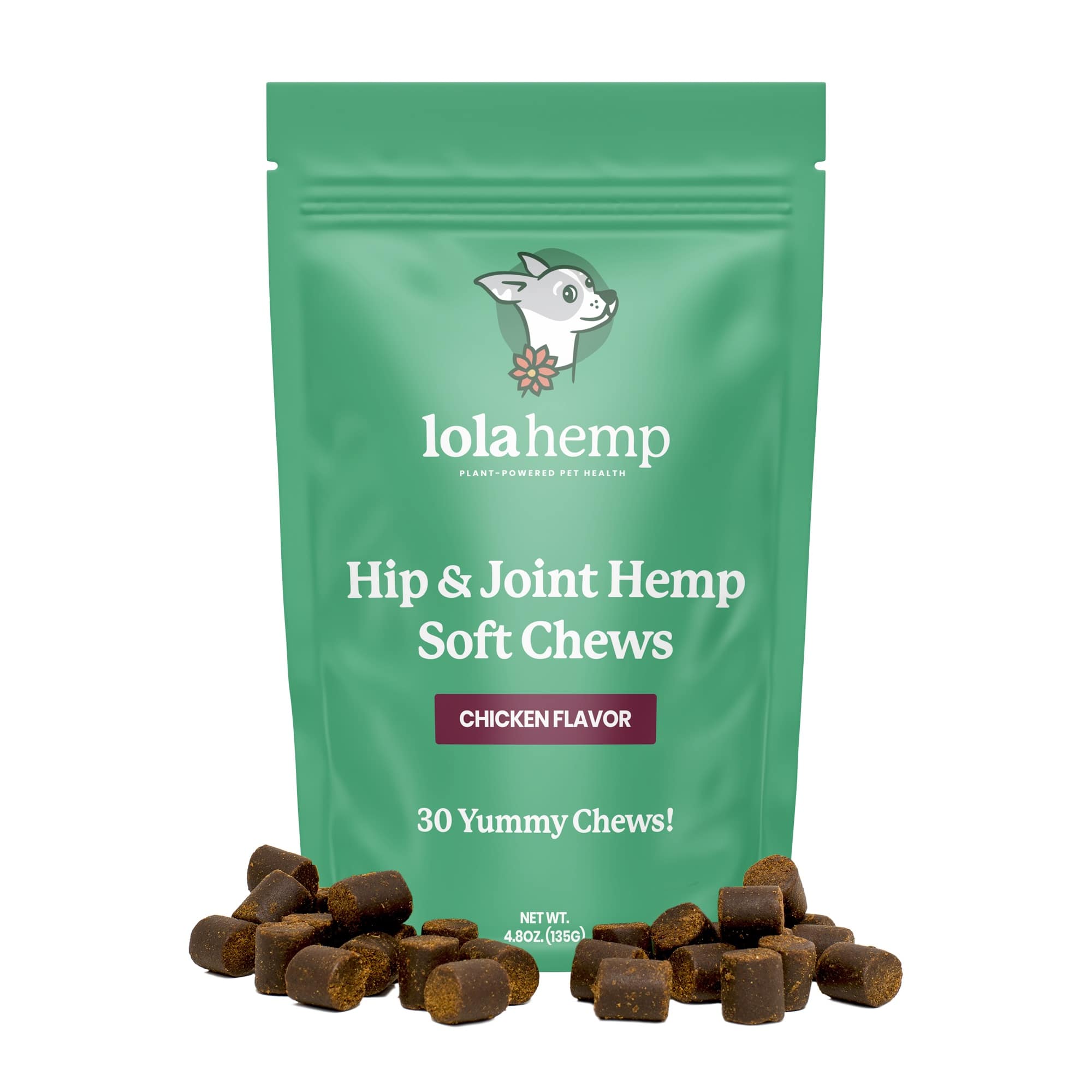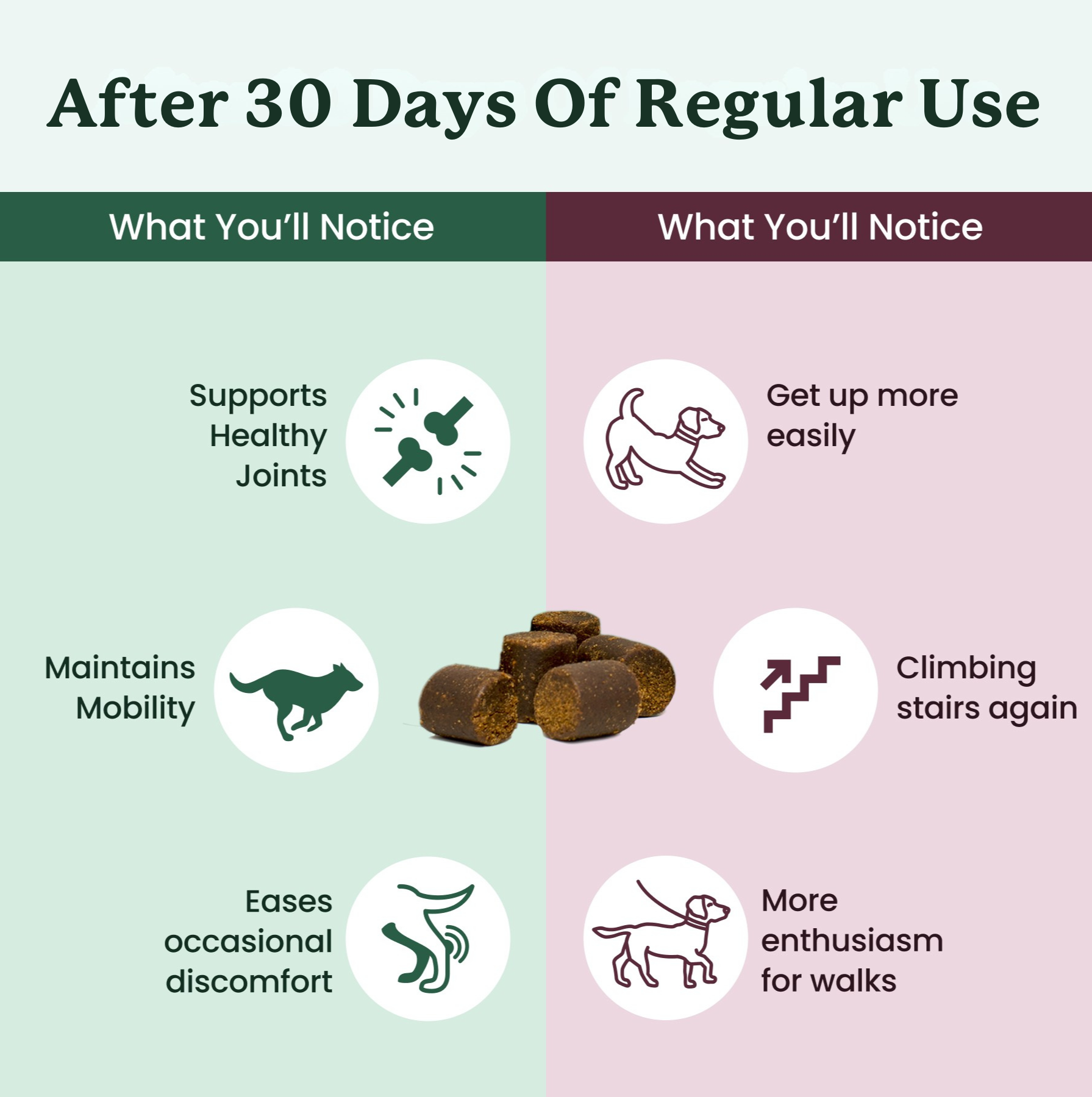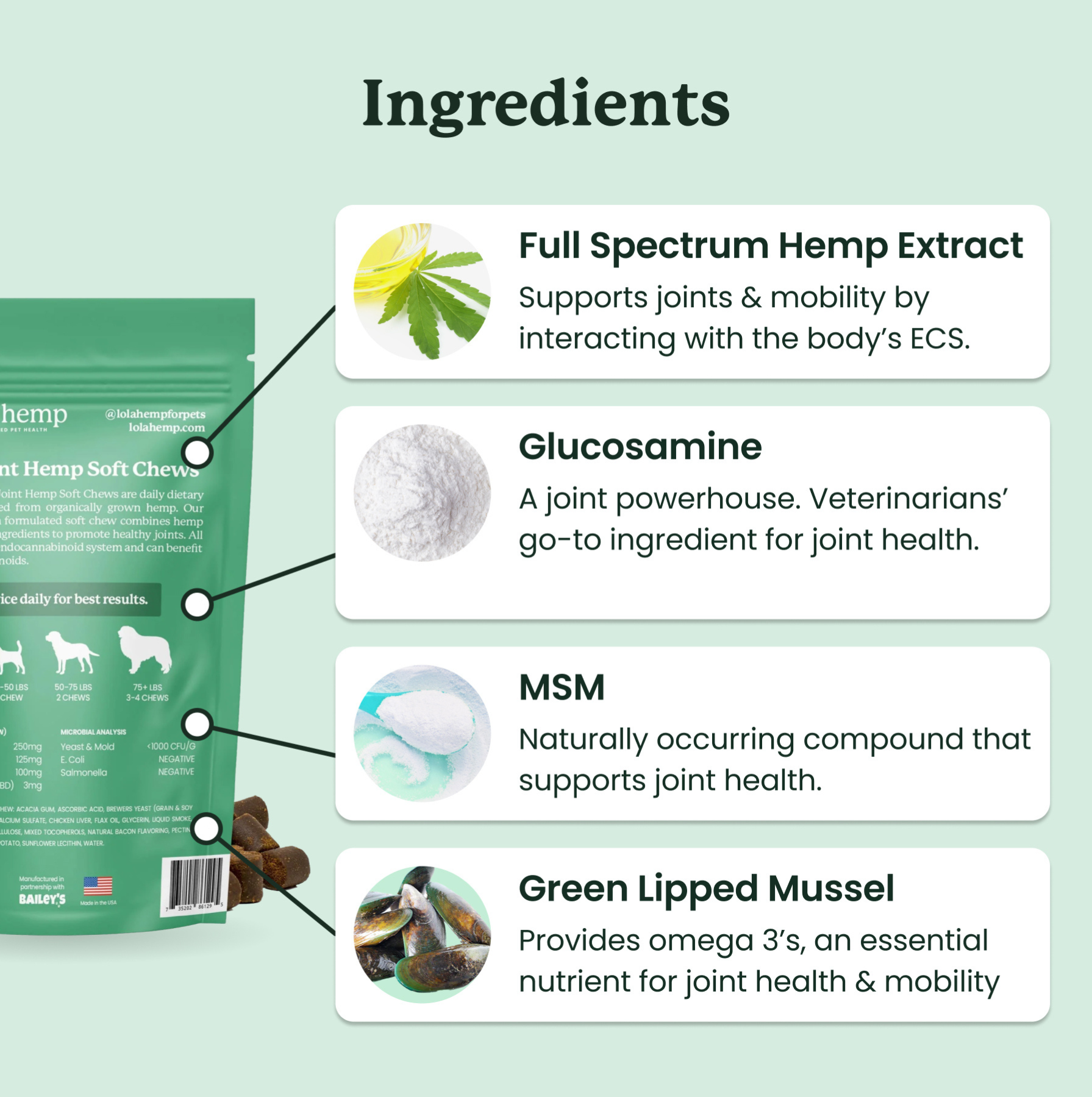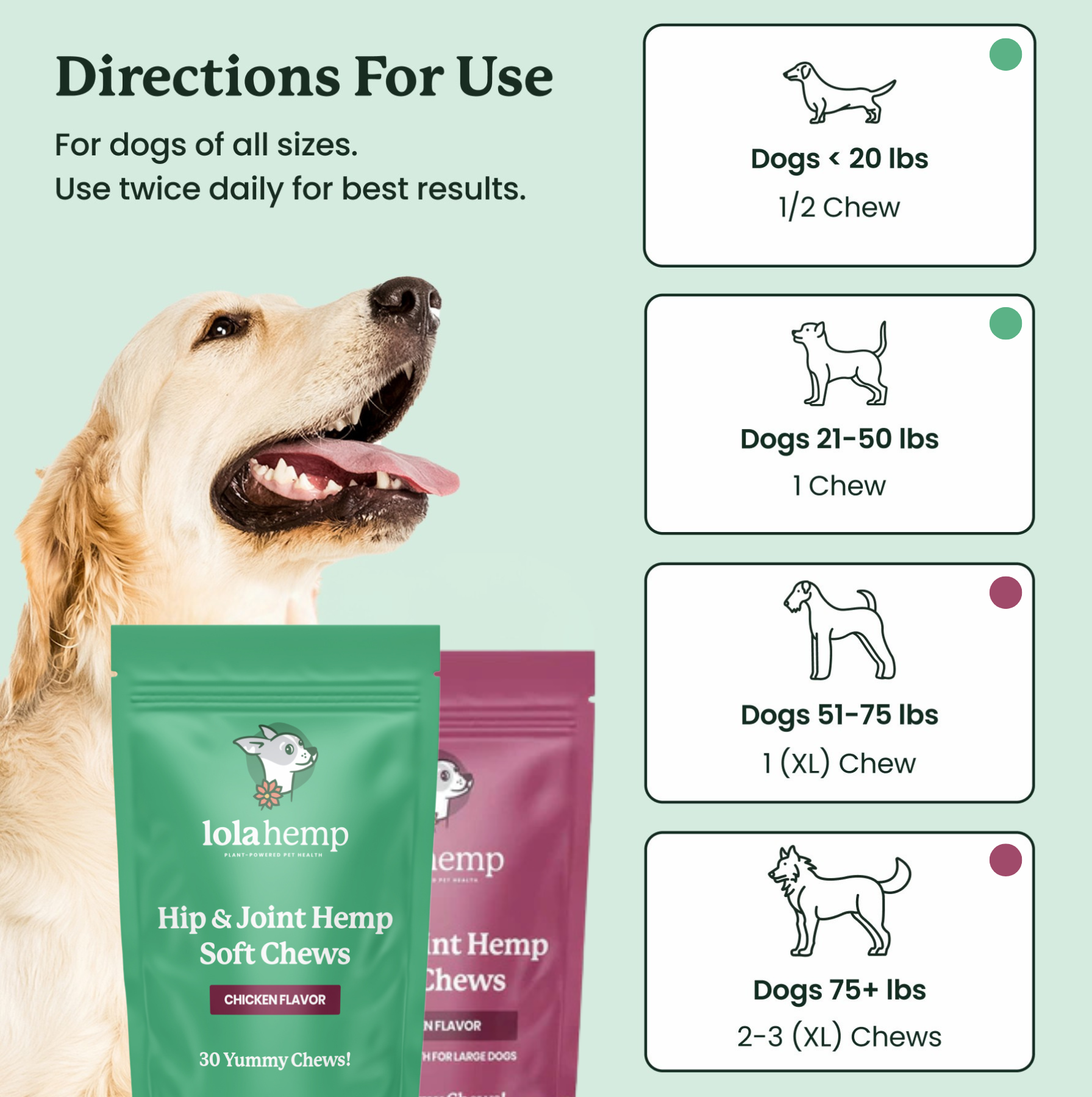As your canine companion continues to age or face common genetic inflammatory predispositions, conditions such as Intervertebral Disk Disease (IVDD) can disrupt their quality of life.
In addition to your dog’s current prescribed medication, you and your veterinarian could also discuss CBD for dogs. For a while now, many dog owners have cited CBD’s entourage effects and potential benefits for their dogs.
In this article, we will explore how CBD use may support IVDD management in dogs, providing a comprehensive guide for pet owners navigating this complex terrain.
We'll start by explaining the fundamentals of IVDD in dogs, its symptoms, and conventional treatments. Then, we'll look into CBD, discussing its potential benefits, various forms, and how it interacts with a dog's endocannabinoid system.
As we examine both scientific research and anecdotal evidence, we aim to provide you with a balanced view of CBD's potential role in managing IVDD in dogs.

Understanding IVDD in Dogs
Intervertebral disks are spongy pads found between the vertebrae in the dog's spine. Vertebrae are bones that form the dog's spine, and the spinal cord is found inside the spine. The spinal cord is made of nerves that link the brain to the local nerves which control the limbs' movement among other functions.
The intervertebral disks in dogs are found underneath the dog’s spinal cord. Their functions include:
- Absorbing shocks for the dog's spine
- Their flexibility allows the dog's spine to bend
- They help protect the spinal nerves in the dog's spine
- They cushion the vertebrae from shock
IVDD is mainly caused when the intervertebral disks are stressed, causing a spinal injury. There are two main ways in which IVDD can occur:
- Type I IVDD
- Type II IVDD
Type I IVDD
Type I IVDD happens when the disk’s soft center bursts out through the outer layer; it's commonly referred to as a slipped disk or herniated disk.
The disks degenerate over time and become brittle. This degeneration occurs mostly in dogs that have short legs and long backs—features found in breeds such as Dachshunds, Beagles, and Shih Tzus.
When the weakened disks are suddenly stressed, they can burst. Triggers can include:
- Jumping off furniture
- Running up stairs
- Playing roughly
- Even just turning quickly
Type II IVDD
Type II is a result of a dog's natural aging process. As dogs get older, the disks lose their water content and flexibility, causing the outer layer to slowly weaken and bulge under normal pressure.
Type II generally affects dogs over 5 years old and is more common in larger breeds like German Shepherds, Labrador Retrievers, and Doberman Pinschers.
IVDD early stage symptoms may include:
- Pain in the hind legs or neck pain
- Urinary or fecal incontinence
- Limp tail
- Head held low
Both types of IVDD can cause similar symptoms, but Type I often has a sudden onset and can be more life-threatening. Type II progresses slowly, giving owners more time to intervene.

Conventional Treatments for IVDD in Dogs
IVDD in dogs requires prompt and appropriate treatment to manage pain, prevent further damage, and restore function while IVDD is still in its early stages.
Conservative Treatment
For mild cases where a dog experiences pain but can still walk, conservative care is often the first step. It includes:
1. Strict Crate RestDogs remain confined for 4–6 weeks to allow disk healing and prevent further herniation.
2. Pain ManagementNSAIDs like Carprofen or Meloxicam help reduce inflammation and pain.
3. Muscle RelaxantsMedications like Methocarbamol or Diazepam reduce spasms associated with IVDD.
4. GabapentinUsed for neuropathic pain by modulating calcium channels.
5. Physical TherapyAfter acute pain subsides, gentle exercises and hydrotherapy help restore mobility.
6. AcupunctureSome veterinarians use acupuncture to support recovery and pain reduction.
7. Surgical Intervention
For severe neurological impairment or paralysis, surgery may be necessary. MRI imaging helps determine the extent of injury.
8. HemilaminectomyRemoves vertebral bone to relieve spinal cord pressure.
9. Ventral Slot ProcedureUsed for cervical disk herniations.
10. FenestrationRemoves degenerated material to reduce future herniation risk.

The Potential of CBD for IVDD Dogs
Dogs have a network of receptors and neurotransmitters that regulates mood, sleep, immune function, and inflammation. This is known as the endocannabinoid system (ECS).
- Endocannabinoids
- Receptors (CB1, CB2)
- Enzymes that break down endocannabinoids
CBD may influence this system to support dogs with IVDD.
Supporting a Healthy Inflammatory Response
Inflammation surrounding damaged disks is common. Research suggests CBD may influence inflammatory pathways.
1. Cytokine ModulationCBD may modulate pro-inflammatory cytokines, potentially supporting IL-10 production.
2. Immune Cell FunctionCBD may interact with immune cells like T-cells and macrophages, supporting a healthier inflammatory response.
3. Oxidative StressCBD has antioxidant properties that may help reduce oxidative stress.
Promoting Comfort and Mobility
CBD may influence receptors involved in discomfort and nerve signaling.
1. Vanilloid Receptors (TRPV1)May support natural discomfort management.
2. Adenosine ReceptorsMay support sleep regulation by influencing adenosine signaling.
3. Serotonin ReceptorsCBD may influence 5-HT1A receptors, supporting mood and pain perception.

Available Forms of CBD for Dogs
CBD for dogs comes in full-spectrum, broad-spectrum, and isolate forms.
Oils and Tinctures
These allow precise dosing and fast absorption when given sublingually.
Treats and Chews
Pre-measured and flavored for convenience.
Topical Applications
Used for localized relief in cases of muscle tension.
CBD Recommended Dosage for Dogs
Dosing depends on weight, severity, and product concentration. Always consult a veterinarian familiar with CBD products for dogs.
CBD for IVDD in Dogs – Frequently Asked Questions
Can CBD help dogs with IVDD?
CBD may support inflammation management, comfort, and mobility by interacting with the ECS and related receptors.
Is CBD safe for dogs with IVDD?
CBD is generally considered safe when using dog-formulated products and correct dosing. Consult your veterinarian first.
How long does it take for CBD to work for IVDD?
Some dogs may experience effects within 30–60 minutes, while long-term support may require consistent daily use.
What form of CBD is best for dogs with IVDD?
CBD oils allow precise dosing and fast absorption, but treats can be easier for daily use.









